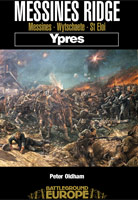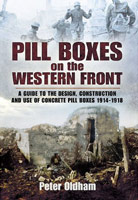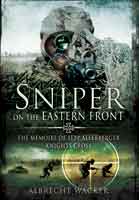Armageddon's Walls (Hardback)
British Pill Boxes 1914-1918
Imprint: Pen & Sword Military
Pages: 286
ISBN: 9781783033003
Published: 31st March 2014
(click here for international delivery rates)
Order within the next 6 hours, 5 minutes to get your order processed the next working day!
Need a currency converter? Check XE.com for live rates
| Other formats available - Buy the Hardback and get the eBook for free! | Price |
|---|---|
| Armageddon's Walls ePub (167.1 MB) Add to Basket | £6.99 |
The British Army and her commonwealth Allies went to war in 1914 with little knowledge and experience of constructing permanent, shell proof protective structures. Some masonry fortifications, such as defensive blockhouses in South Africa, had been built but the Royal Engineers of the Army were more versed in simple temporary defences suitable for mobile warfare. Home defences were a limited number of forts around naval ports, and Martello Towers on the east coast. It was considered that the Navy was quite able to defend Britain's coasts.
The Germans, on the other hand, as with the other continental countries such as France, Belgium, Italy, Holland, Poland, Austria, etc. had been constantly renewing and updating border forts for several centuries. They had also maintained fortification and siege elements of their armies, who were experienced in designing and constructing strong shelters. Both German and French armies began the war with a degree of expertise in what was to become a static war with little movement. However, by 1918 the British were to surpass both enemy and her allies in the design and construction, with supply and logistics, of such shell proof cover for troops and defensive positions.
This book gives the history of development and innovation of concrete bunkers, pill boxes, blockhouses and general concrete constructions during the First World War. Many of these structures – some showing obvious signs of war damage - still exist in France and Belgium today.
All the existing structures, with photograph (except for some which are impractical, because of dense vegetation,) are shown within. Many entries have contemporary maps showing how they fitted into a defensive system, whilst for others the location can be identified from the text. GPS coordinates are given for each entry, except for a few which are on private land and where privacy has been requested.
Overall, this book is a special testament, not only to the men who were encamped in these pill-boxes between 1914-18, but also to the meticulous, dedicated and passionate research which the author has put in. What an important legacy he has left for anyone who visits the battlefields, seeking to learn more about these important structural historical buildings.
Jon Sandison
I discovered a lot from this one and would happily recommend it to anyone interested in wartime fortifications, particularly the Western Front and one to keep in the car with you if you plan to visit the areas it covers.
Military Model Scene, Robin Buckland
Read the complete review here.
It would be hard to find a better qualified person to write this book than Peter Oldham. His forty year career as a concrete technologist means he has an unrivalled knowledge of the production of concrete structures. Allied to this is his special interest in the strategy and tactics of defensive methods in WWI. His research took him from the planning stages through [to] the theories of fixed and elastic systems to ordnance-proof structures. The outcome is a book which may be fairly described as seminal.
Fortress Study Group
'Armageddon's Walls' should be on the shelves of all "concreteophiles". It is an excellent book.
This deserves to be in every battlefield tourer's backpack.
Society of Friends of the National Army Museum
A well written and highly illustrated history of the British Pill Box.
The Great War Magazine
The book is extremely well laid out, covering all the major sectors on the front from the Somme to Ypres. It is packed with photos, many in a then and now style format. The book is loaded with dozens of maps and original Royal Engineers drawings and sketches.
War History Online
Mr Oldham clearly has huge knowledge on the subject and obviously delights in sharing it with the reader rather than patronising them or over complicating the subject matter. He clearly describes the different types and methods of building British pill boxes in WW1 and goes some way to dispel the myths about them too! The term pill box wasn’t used until 1917 and very few actually had firing apertures!
If you’re hungry for a new read this book is well worth the look.
About Peter Oldham
Peter Oldham has a special interest in defence strategies and tactics of the First World War, ranging from the grand planning and organization of defence schemes to the parts played by the sapper who dug the trench and the tommy who has to man it. Having studied the evolution and changing theories of fixed and elastic systems, he then researched the part played by permanent fortifications and shell-proof protection for troops and services. His understanding of the problems of the supply and use of building and concreting materials is unrivalled. As a concrete technologist, he has spent twenty-five years testing and producing concrete materials and structures.


















